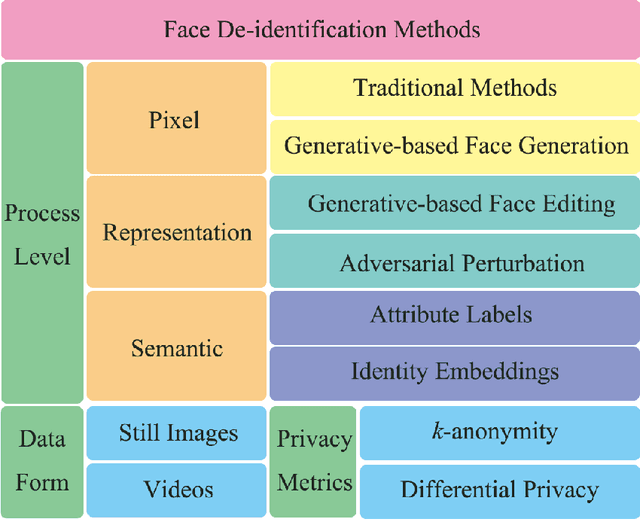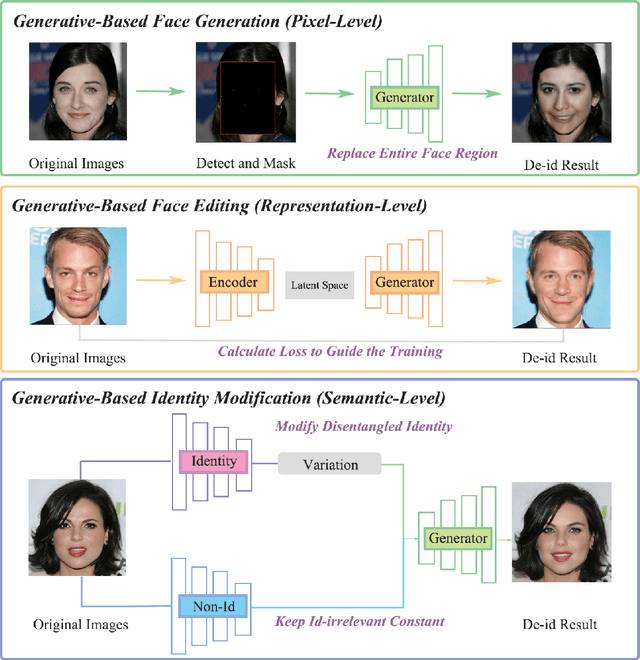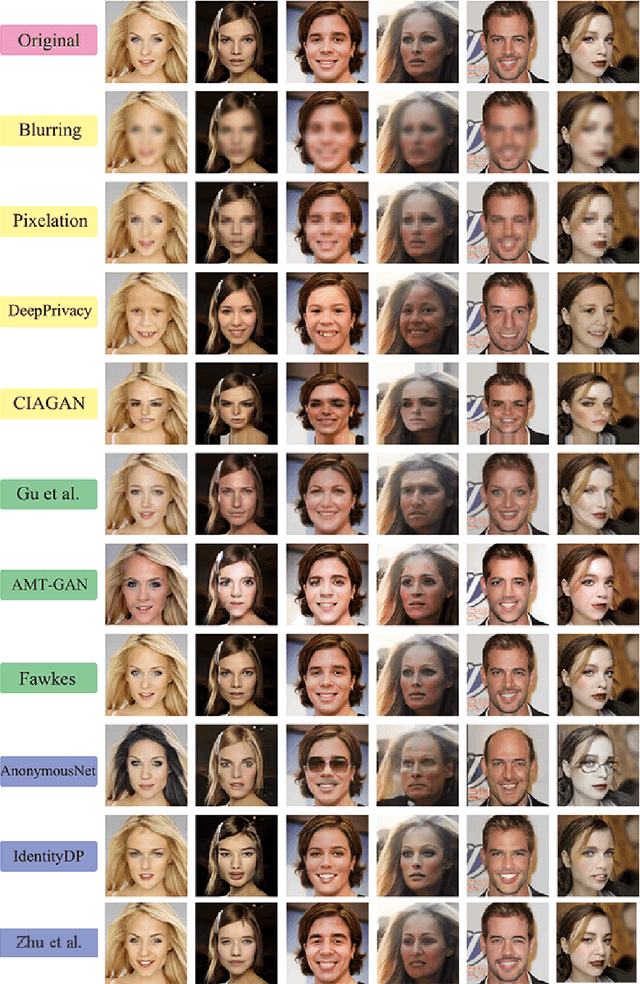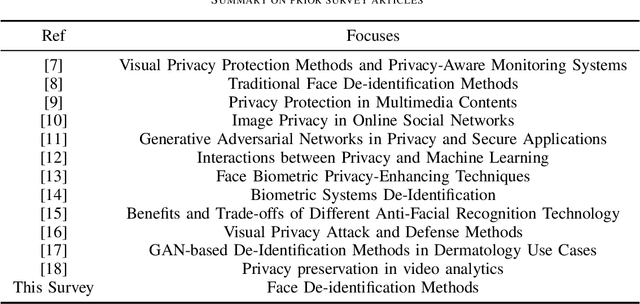Jingyi Cao
Face De-identification: State-of-the-art Methods and Comparative Studies
Nov 15, 2024



Abstract:The widespread use of image acquisition technologies, along with advances in facial recognition, has raised serious privacy concerns. Face de-identification usually refers to the process of concealing or replacing personal identifiers, which is regarded as an effective means to protect the privacy of facial images. A significant number of methods for face de-identification have been proposed in recent years. In this survey, we provide a comprehensive review of state-of-the-art face de-identification methods, categorized into three levels: pixel-level, representation-level, and semantic-level techniques. We systematically evaluate these methods based on two key criteria, the effectiveness of privacy protection and preservation of image utility, highlighting their advantages and limitations. Our analysis includes qualitative and quantitative comparisons of the main algorithms, demonstrating that deep learning-based approaches, particularly those using Generative Adversarial Networks (GANs) and diffusion models, have achieved significant advancements in balancing privacy and utility. Experimental results reveal that while recent methods demonstrate strong privacy protection, trade-offs remain in visual fidelity and computational complexity. This survey not only summarizes the current landscape but also identifies key challenges and future research directions in face de-identification.
 Add to Chrome
Add to Chrome Add to Firefox
Add to Firefox Add to Edge
Add to Edge